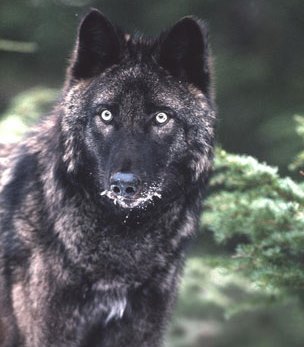The Office of Subsistence Management heard Thursday from the public – some from out of state – about whether to allow a subsistence wolf harvest on Prince of Wales Island and adjacent islands.
A dozen speakers provided comment on the subsistence hunt, and half were Alaskans. The others called from Kentucky, North Carolina, Illinois, Connecticut, Louisiana and Washington State.
Everyone calling in from the Lower 48 opposed allowing the hunt.
Adrian Dillon of New Orleans, identifying herself as a potential eco-tourist, says the idea of hunting wolves is distasteful, and she doesn’t understand why anyone would want to kill a wolf.
“I know myself and many others like me are extremely put off by this wolf hunt that you all are proposing,” she said. “We consider it pretty barbarous.”
Closer to home, POW resident Michael Kampnich questioned the validity of claims made by environmental groups that have asked the Federal Subsistence Board to close this year’s wolf hunting and trapping season in Game Management Unit 2.
For example, Kampnich says, conservation groups have said that POW’s wolf population is isolated. He says studies have shown that wolves migrate far distances, by land and water.
“Wolves can swim as far as 8 miles, and travel up to 43 miles a day,” he said. “This leaves a lot of opportunity for wolves to migrate to and from Prince of Wales Island from various surrounding islands that are significantly less than eight miles in distance.”
Kampnich says he worked with state biologists who were studying wolves, and he believes they are doing good work and should be trusted to manage the species.
Al Edsel of Klawock on POW says that, based on his own observations, he doesn’t think a recent state study that shows a drop in the wolf population is accurate.
He says his son-in-law was visiting recently, “and in a period of three weeks, he saw six wolves. Two silvers…, two blacks…, and two grays… I also saw two wolves myself this year. Wherever I go nowadays, I see scat all over the place, I see paw prints. This seems to be an increasing trend.”
Calling in from Ketchikan was Joey Fama, speaking in favor of conserving POW wolves, until more research shows how many there really are.
“It seemed like the wolf numbers were really low, the numbers that the Fish and Game put out, and also the fact that they weren’t necessarily sure about how many wolves there are,” he said. “I thought it … wasn’t a good idea to open up hunting for the year until they got better numbers.”
The Fish and Game study released in June showed the number of wolves in Game Management Unit 2 had dropped to 89 from the previous year’s estimate of 221.
Conservation groups quickly rallied to call for the closure of all wolf hunts this winter, as well as other efforts to help the wolf population rebound.
The State of Alaska last week announced that it would have a wolf hunting and trapping season on POW this year, with a harvest quota of nine animals. That is a combined state and federal quota, which means a subsistence hunt — if allowed — would not add to the total legal harvest.
The state wolf season opens in December. The federal subsistence wolf harvest opens Sept. 1.
We have reported previously on this issue. You can read and listen to those stories here on our website. Just types “wolves” into the “Search Local News” function at the top of the home page.
This story has been corrected to accurately identify Michael Kampnich as one of the speakers, and to clarify that the quota announced last week is a combined state-federal quota.






